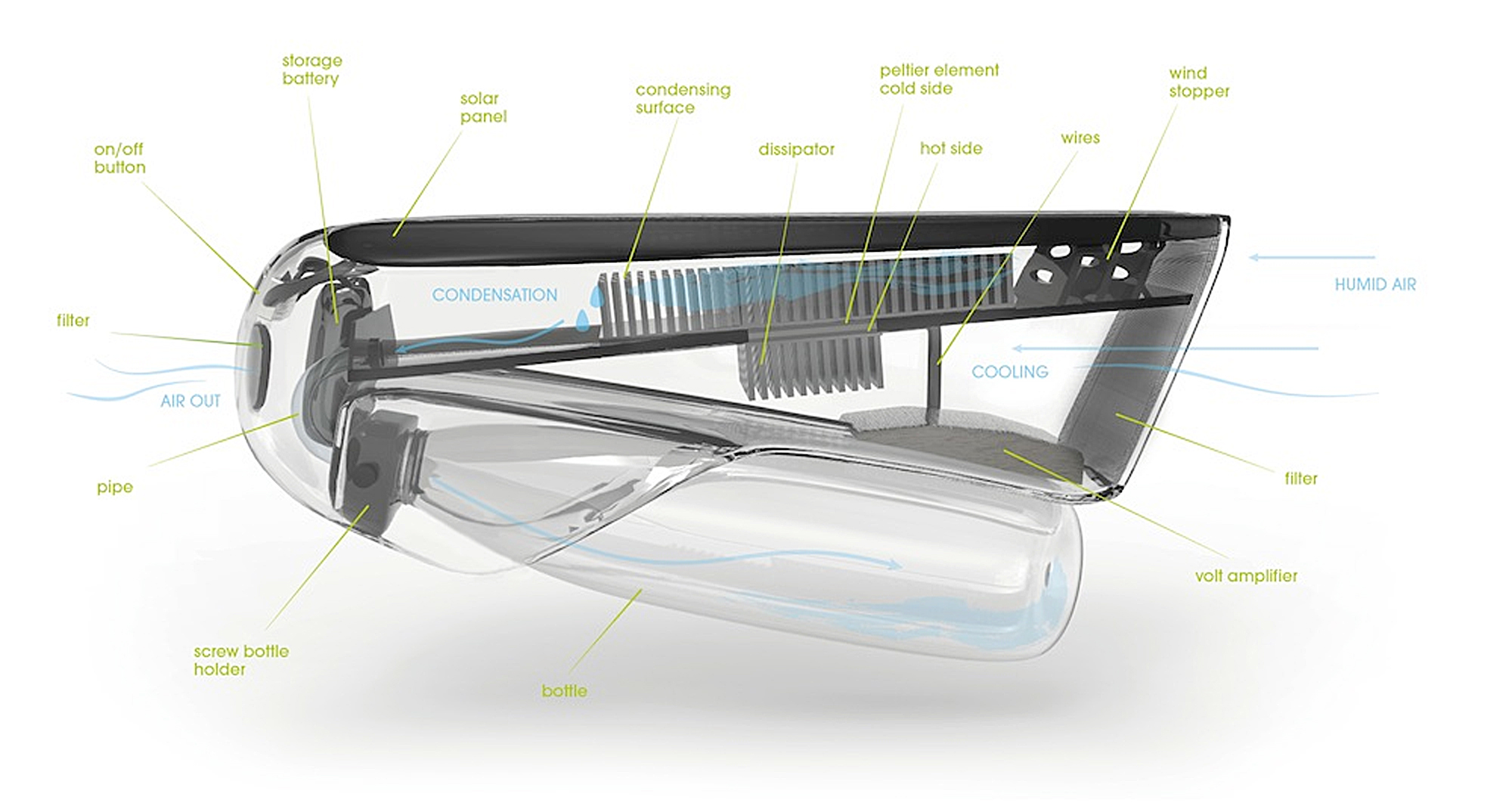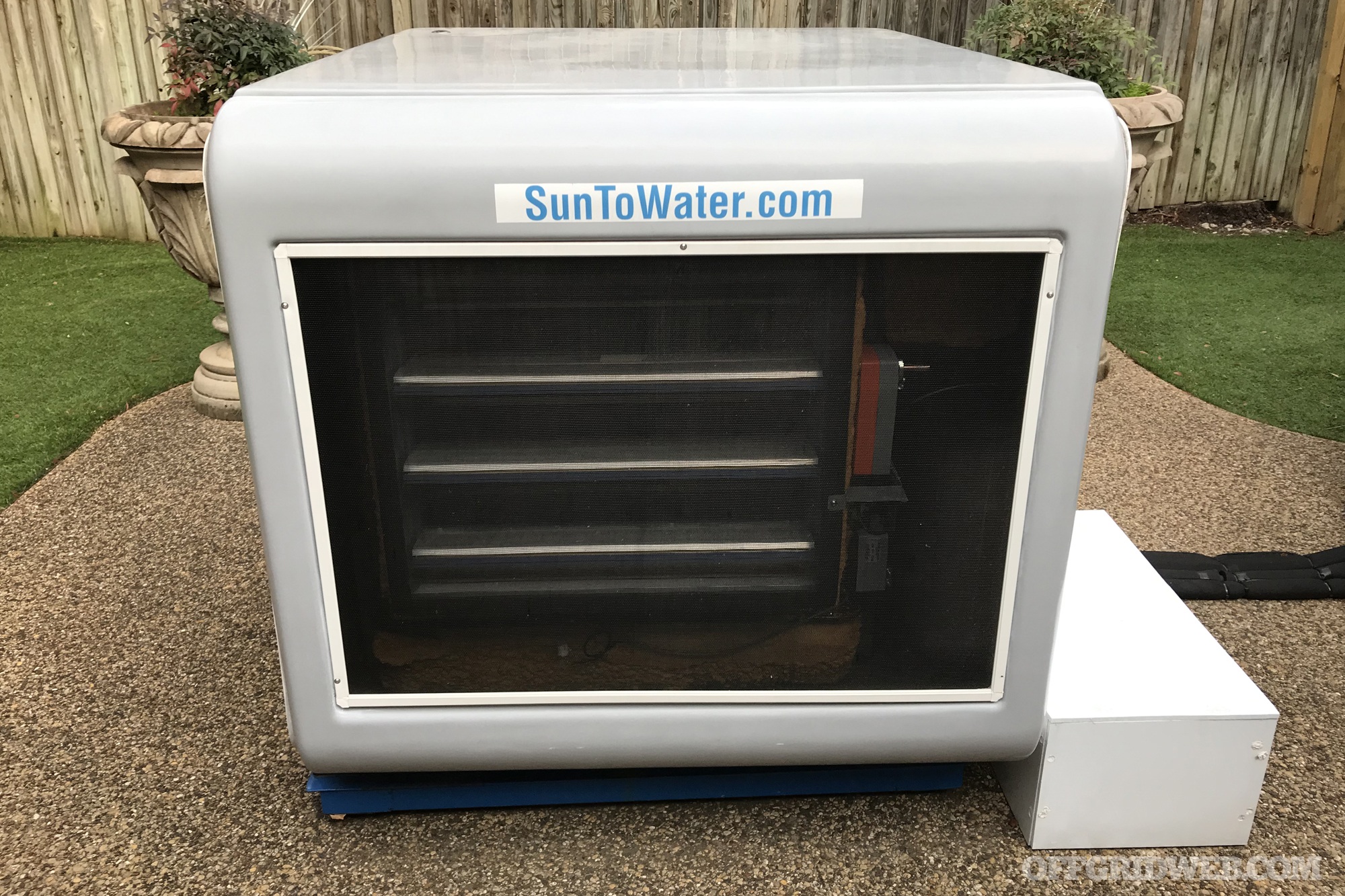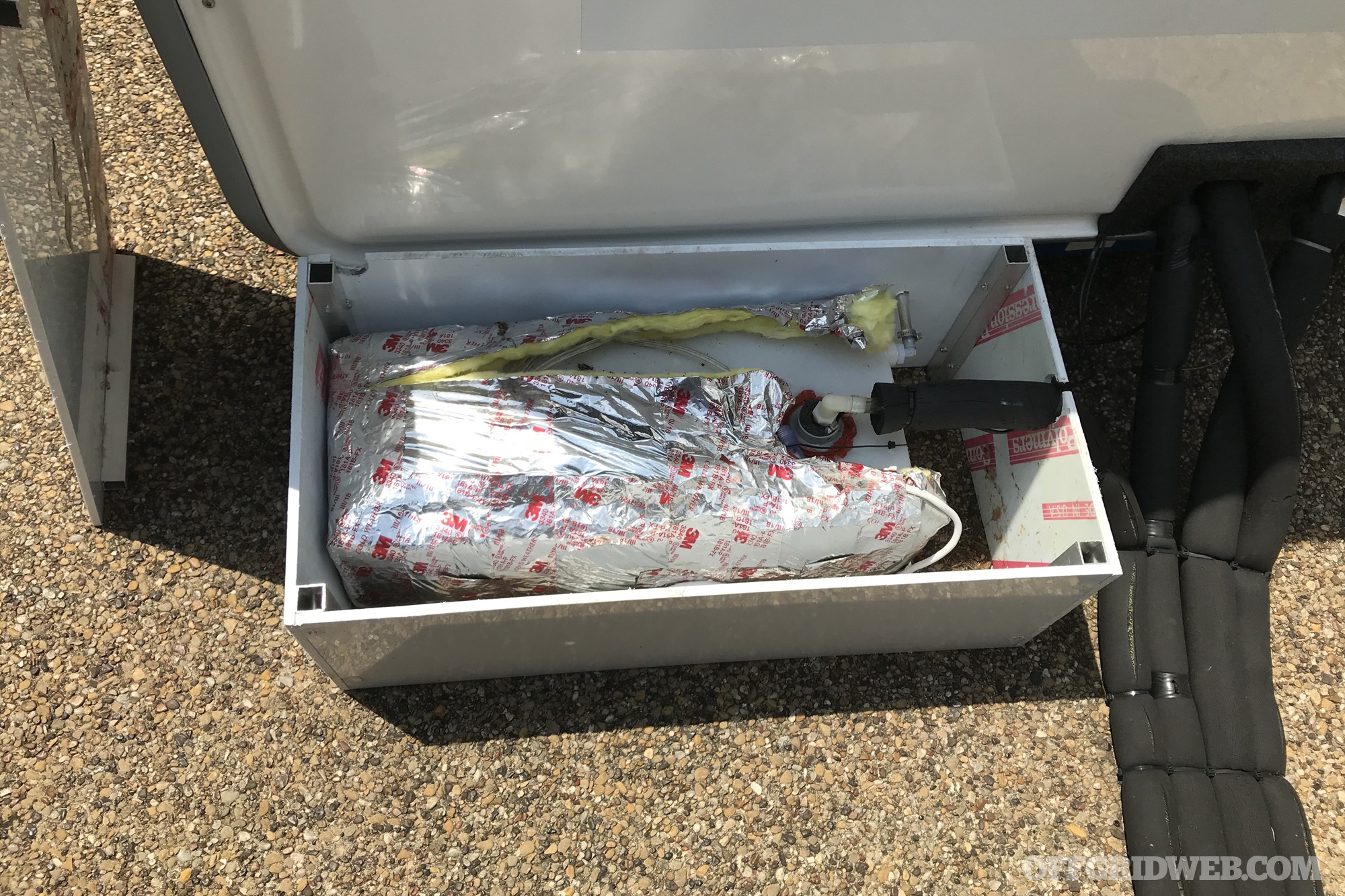RECOIL OFFGRID Gear New: SunToWater Atmospheric Water Generator in Field Trials
In This Article
Anyone who has spent time outside on a muggy summer day knows firsthand that humid air can contain a lot of moisture. Humidity mostly serves to make us feel sticky and uncomfortable in its natural form, but what if it could be captured and repurposed as a survival resource? This is the concept behind devices known as atmospheric water generators (AWGs).
At their core, most AWGs use temperature control to harness condensation. If you've ever seen the water dripping out from under an air-conditioned car or running out from the drain on a home A/C unit, you've seen this effect at work. A significant temperature differential leads to condensation, drawing moisture out of the air and eventually forming tiny droplets of dew. Gather enough dew, and you'll have a usable water source. This sounds great, but there's a reason we don't get all our water this way — it's not an easy process.
Take a look at your electricity bill after running an air conditioner all month, and it becomes obvious that controlling air temperature is a very energy-intensive process. Inefficiency can be minimized, but thanks to the laws of thermodynamics, there's no eliminating it completely. Therefore, capturing moisture from air through temperature control takes quite a bit of energy as well.

In the past, some atmospheric water generator companies have made bold claims about how much water they could generate. The Fontus comes to mind — we wrote a brief article about the announcement of that water bottle concept back in early 2016. We also mentioned our doubts about how quickly and efficiently it claimed to collect water, especially given its tiny size and lack of substantial power source. Unfortunately, that project fizzled quickly, with retrospective analysis suggesting it may have been a scam from the beginning.

Ironically, the Fontus bottle turned out to be vaporware, unable to fulfill the lofty promises made by its crowdfunding...
However, those bad experiences don't mean that AWGs are doomed. With sufficient energy input, humidity, and time, an AWG can produce substantial quantities of clean water. Researchers and engineers are working to refine this technology and overcome its inherent challenges.
Even in ideal conditions, an atmospheric water generator is never going to fill 55-gallon drums with water every few hours, or replace more traditional water sources (e.g. a well or system for purifying an existing natural water source). What it can do is produce small quantities of water in areas where clean natural water is very hard to obtain. Pairing an AWG with a solar panel array and batteries also enables it to be used entirely off-grid — requiring no reliance on the power grid or municipal water supply.
We recently received an email from Jay Lopez, the CMO of SunToWater Technologies. Jay had read our recent article on water distillation in the wild, and said he'd like to show us what SunToWater is working on in this field. The company is currently running field trials of its own approach to an atmospheric water generator, with proof-of-concept units set up in California, Arizona, and Texas. These field trial units are set up with laptops that collect data from their sensors, and send that data to a remote server for analysis.
Once enough data has been collected and analyzed, SunToWater's ultimate goal is to release a fully-operational, independently-certified, solar-powered AWG that can generate up to 2.8 gallons of clean water per day. Naturally, atmospheric conditions and humidity will vary this output (more about that later). We're told that projected pricing for the finalized unit will be approximately $5,000.
This all sounds interesting, but as we mentioned earlier, we've learned to approach AWGs with a heightened degree of skepticism. But we wanted to understand how it works, so we got on a video conference call with Jay to see how the Texas field-trial unit works — it currently resides in his backyard.
The key to each SunToWater unit is a desiccant compound that captures water. The little disposable silica gel packets in dehydrated food and other product packages are one example of a desiccant — a substance that absorbs moisture from the air. Each SunToWater AWG uses a patented array of tightly-packed panels, which are made of a salt compound contained in fabric. The company says this desiccant is reusable, so it can be soaked and dried out repeatedly without a need for replacement.

Desiccant panels are stacked behind metal shutters inside the generator. The shutters open in Absorption Mode.
The operational cycle of the SunToWater unit begins at night, when a series of louvers open electronically to expose the desiccant panels. At the same time, fans activate to pull humid air through the system, allowing the desiccant material to draw out the moisture the air contains. This process, which is referred to as Absorption Mode, continues in the dark for several hours.
When the sun comes up, the SunToWater unit goes into its second phase: Extraction Mode. The louvers close, and heated air is circulated through the sealed desiccant container. This change in temperature bakes the water out of the desiccant media and condenses it as a liquid, effectively creating distilled water. An attached storage tank captures the water.

This small storage tank currently sits next to the field-trial unit, but will eventually be integrated into the housing.
At this stage, the water is ready to use for purposes such as washing or crop irrigation. However, if you want to drink the water, there's another step in the process to ensure its potability.
Above: This wood box beside the unit contains the filters, UV purifier, pump, and tap. These parts are separate for the field trial process, but will be integrated into the production version of the generator. The blue water drum serves as an overflow tank for clean water.
A pump in the unit pressurizes the water and passes it through two cleaning filters, plus a third re-mineralization filter to replace beneficial minerals that would normally be present in non-distilled water sources. This is intended to improve the taste and alleviate health concerns that may occur from exclusively drinking de-mineralized water for extended periods. Finally, the water is treated by a UV light purifier to kill any bacteria or other microorganisms that might be present. The faucet then delivers purified, re-mineralized, potable water.
When we compare the current field-trial units (such as the one in these photos) to the plan for the finalized SunToWater system, there are some key differences that must be mentioned.
First, as indicated by the SunToWater name, the goal is to get these units functioning entirely off solar power. Currently, the Texas unit we saw is running on the power grid to evaluate the other parts of the system. This means the heat for the bake cycle is provided by an electric heater, and the rest of the unit's electronics are also running off an outlet.
We're told that the final version will use two large solar panels for power, similar to what you'd find on the roof of a home (exact specs haven't been determined yet). Second, two external heat exchangers will generate heat for the bake cycle that enables water condensation. These parts will be separate from the SunToWater unit, so you can mount them in an optimal location to soak up the sun's rays.
The production SunToWater unit will not require the separate components seen in these photos. The clean water reservoir will be internal, as will the faucet and re-mineralization system. So, aside from an optional oversized water storage tank like the pictured blue drum, you'd just need the unit plus two solar panels and two heat exchangers.
Now, if you're thinking that the transition from municipal power to solar will result in a loss of efficiency, you're absolutely right. That's unavoidable. However, the claimed output still sounds quite respectable. Currently, Jay tells us that the plugged-in SunToWater field trial unit in his yard produces between 4-7 gallons of water per day. The projection for the solar-powered unit is 2.8 gallons per day in ideal conditions.
These numbers don't appear to be outside the realm of possibility. A much smaller solar-powered prototype AWG created by researchers at U.C. Berkeley and MIT in 2017 was able to collect 2.8 liters of water over a 12-hour period. That's 1.48 gallons per 24-hour day. It accomplished this feat in a regulated test chamber at 20% humidity — a relatively dry atmosphere.
This brings us to the other major consideration for atmospheric water generation: Mother Nature. The SunToWater system is reliant on water vapor in the air, so it works best in humid conditions. Jay tells us that the field-trial units are functional as low as 18% humidity — a higher percentage will allow it to get closer to the maximum 2.8gal-per-day projection.
Fortunately, every state in the U.S. has more than 25% average hourly relative humidity throughout the year. Most of the country sits between 60% and 80%. The driest state in the nation, according to a 2018 study by climatologist Brian Brettschneider, is Nevada at a 38.3% average. SunToWater is also conducting its trials with this in mind — CA, AZ, and TX are all in the top ten states with the lowest average hourly relative humidity.

AWGs are able to function in drier climates, but output will be greatly reduced. Photo: Flickr.com/habibkaki
Temperature is another factor that affects AWG functionality. Obviously, sub-zero temperatures will cause water to freeze and make it impossible to collect dew. SunToWater says they haven't yet found a high temperature limit that causes the unit to stop working. Lastly, as with any solar-powered device, you'd need clear and sunny conditions to keep the system charged. So, the optimal conditions for the SunToWater AWG would be a warm and muggy summer day.
Jay told us that SunToWater plans to add an estimated output calculator to its web site before the production version of its AWG goes on sale. This will allow prospective customers to enter in the atmospheric conditions of their home or bug-out location to gauge roughly how much water they'll be able to collect there.
For anyone who wants to live sustainably in an off-grid location, the idea of continuously gathering water from the air is an appealing one, especially when it's powered entirely by solar energy. As we said before, depending on your location, there may be several easier and more efficient methods of collecting clean water — rainwater collection, a well, or filtration of river/lake water, for example. But even in those cases, an AWG could serve as a backup in case the other water sources dry up. It would also be an option if groundwater sources were inaccessible, or if those sources became contaminated.
However, AWGs are still a developing technology, and one that has some substantial hurdles to overcome before it reaches mainstream acceptance. Based on the limited glimpses we've seen so far, we're interested to watch as the SunToWater generator trials continue. We still approach atmospheric water generation with a healthy degree of skepticism, but hope that SunToWater and other companies in this field can make AWGs into a viable option for off-grid water collection in the future.
No matter what system — or better yet, systems — you rely on for water, it's wise to be prepared for a day when tap water shuts off and bottled water runs out.
 STAY SAFE: Download a Free copy of the OFFGRID Outbreak Issue
STAY SAFE: Download a Free copy of the OFFGRID Outbreak Issue
No Comments